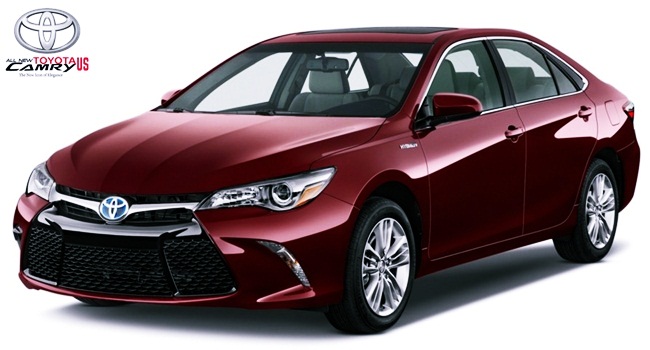The 2018 Toyota Camry Hybrid was unveiled by the Japanese carmaker during the North American International Auto Show in Detroit, Michigan early this month.
Based on the statements of Masato Katsumata, the company’s chief engineer, the hybrid version of the new Camry is anticipated to achieve best-in-class fuel economy ratings and be comparable to the driving efficiency of the Toyota Prius.
Under the revised 2017 EPA fuel-economy testing standards, the best non-plug-in hybrid in the mid-size sedan category is the Honda Accord Hybrid at 49 miles per gallon (mpg) for city driving, 47 mpg highway, and 48 mpg combined, notes Green Car Reports.
Today’s outgoing Camry Hybrid is at the bottom of the EPA numbers among hybrid mid-size sedans, with its highest rating at 42 mpg city, 38 mpg highway, and 40 mpg combined.
Katsumata also revealed something in the event about the 2018 Toyota Camry Hybrid that the company hadn’t previously disclosed, it will have two different battery options.
He pointed out that the Camry Hybrid will use two different battery packs. The lighter lithium-ion pack will be used both in a model that delivers the highest fuel-economy ratings and for the heavier, more luxurious XLE and XSE trim levels.
That might indicate that a nickel-metal-hydride pack could be employed in the least expensive base-level Camry Hybrid.
Three engine options
The new 2018 Camry will also come with three powertrain options. These are the high-volume 2.5-liter 4-cylinder engine, an optional 3.5-liter V-6 for more traditional buyers, and a new generation of the well-known Camry Hybrid that pioneered the mid-size hybrid sedan segment more than a decade ago.
During its Detroit launch, the 2018 Toyota Camry Hybrid did not actually appear on stage, and aside from confirming its existence, the company said very little about it.
The Camry Hybrid will use a 2.5-liter 4-cylinder engine optimized to work with what the company calls the Toyota Hybrid System II, effectively the successor to the Hybrid Synergy Drive system used beginning with the 2004 Toyota Prius.
The new Camry, however, uses elements of the same Toyota New Generation Architecture component that underpins the 2016 Toyota Prius hybrid.
That means that its hybrid battery pack moves from under the trunk floor to a new location under the rear seat, improving trunk volume and offering better front-to-rear weight distribution than the conventional Camry.
Sharing elements with the Prius
However, the 2018 Camry Hybrid may share more with the latest Prius than just components under the skin.
The 2016 Prius has two different battery packs: the least expensive Prius Two version uses a nickel-metal-hydride pack, a technology in use for 20 years now.
But all higher versions employ a lithium-ion pack that’s dimensionally smaller and much lighter for every other version, including the Prius Two Eco model that delivers an EPA combined rating of 56 mpg.
When asked about the possibility of a plug-in version of the Camry Hybrid, to compete directly with plug-in hybrid models of the Ford Fusion, Hyundai Sonata, and Kia Optima, and perhaps the Chevrolet Volt as well, Katsumata and other Toyota executives demurred.
Toyota has not released any fuel-economy projections thus far for a 2018 Camry Hybrid.
The Camry Hybrid will ride on Toyota’s new TGNA modular platform which debuted with the 2016 Prius and which will provide the basis for about half of Toyota’s vehicles by decade’s end, reports Car and Driver.
The TNGA bits have done wonders to tidy up the Prius’ dynamics, so analysts are cautiously optimistic for the Camry when it made the switch as well. Weight-reduction measures also are part of the plan, and that aluminum is being used for the hood and sundry other places in the structure.
Obviously, the prototype does not reveal much about the new production car, except that it has four wheels, some windows, and panels that tape can stick to.
